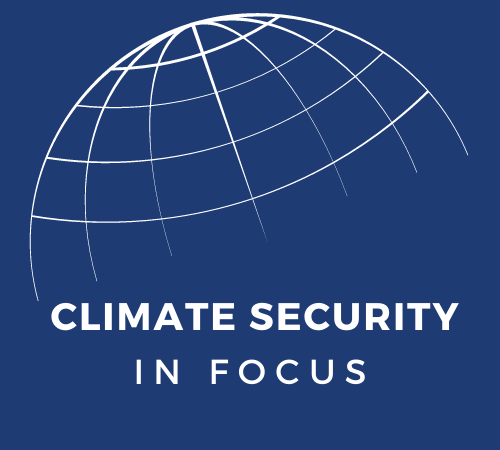
Increasing Food Prices and Social Unrest
The global food supply is extremely susceptible to climate change. As climate change continues to alter rainfall patterns, cripple crop yields, and destroy farmlands, the conditions for instability and social unrest grow. Worsening impacts from hotter temperatures have already resulted in increasingly limited harvests and rising food prices. Such price fluctuations have historically been crucial indicators of stability, and the United Nations (UN) has warned that higher food prices heighten the risk of democratic breakdowns, civil conflict, protests, and rioting. With war in Europe exacerbating food supply challenges, there are warning signs that the sharply rising food prices are already stirring unrest.
There are several historical examples of rising food prices driving unrest. Following successive droughts in Australia and limited harvests in major cereal producers such as Ukraine and India, the 2007-2008 food crisis saw prices nearly double, sparking food riots across Africa, Asia, and the Caribbean. Three years later, similarly extreme weather reduced harvests across multiple continents and drove grain and other crop prices up 70% between 2010 and 2011. Perhaps most infamously, in response to these rising food prices in Tunisia, Mohamed Bouazizi lit the spark that ignited a series of revolutions across the Middle East and North Africa (MENA) region, known as the Arab Spring. Subsequently, in Syria, uprisings began after concurrent droughts compounded rising prices, and in Egypt, protestors chanted “bread, freedom, social justice.”
A similar trend in rising prices is taking place today, but with two notable differences. First, countries in 2008 and 2011 were better equipped to handle ecological and economic shocks than today’s pandemic weakened nations. Second, the food crisis at the end of 2021 was already more severe than in 2008 or 2011.
In 2011, when the UN’s Food and Agriculture Organization (FAO) Food Price Index peaked at 131.9, riots erupted in 48 countries, including those that provoked horrific and lasting violence. In January 2022, climate change and pandemic bottlenecks drove the index up to 135.6 and the UN warned that 2022 could mark the worst humanitarian crisis since World War II. Russia’s war of aggression in Ukraine has exacerbated an already dire situation and in May 2022, the Food Price Index peaked at an unprecedented 157.9. The Index remains at an alarming 154.2 as of June. These statistics have already had significant consequences for geopolitical stability. On July 9, under the weight of years of large loans, food prices rising 80% sent the Sri Lankan people storming into then President Rajapaksa’s palace. The revolution in Sri Lanka echoes that of 2010 Tunisia and there are still more flashpoints germinating.
In Lebanon, Iraq, and Morocco, protests have been ongoing since early March as climate and pandemic related factors caused key food prices to peak at an astonishing 483.15% in January, and 10-50%, & 9.1% in early March respectively. Similar protests are anticipated in other MENA countries. Even before the war in Ukraine began, Syria and Yemen saw food prices increase 97% and 81%. In Tunisia extreme weather, due to climate change, further pushed the price of wheat up 80% between 2020 and 2021, and in 2022 bread prices have hit their highest levels in 14 years. In Egypt, inflation is up 14.7% and bread prices have increased up to 50%, straining the government’s ability to maintain already reduced bread subsidies, which have historically been flashpoints for unrest. Meanwhile, key staples are rising 30% in Libya, and the Ministry of Economics reported that it will be unable to prevent a flour supply crisis.
Similarly, the Horn of Africa has seen unprecedented drought which has limited harvests up to 70%. In Ethiopia and Somalia, the cost of food has risen 66% and 36%, and in Kenya, a 2022 Economic Survey found that people are increasingly turning to their savings or loans to deal with rising prices. Even with significant international action providing humanitarian aid, in many of these countries, forced rural-urban migration will be the only way for many to combat rising prices and dwindling livelihoods. Such migration could emulate the 2020 Ethiopian War when over 100,000 drought refugees fled to the Tigray region, contributing to the loss of relative stability throughout Ethiopia and the Horn of Africa region. Current rising prices are already compounding existing tensions between herders and farmers and the FAO has warned that as prices continue to rise, they will likely foment further social unrest throughout the continent.
In June, G7 countries committed $5 billion in aid to mitigate food insecurity, and in July, the UN reached a historic deal to resume Ukrainian grain exports. While immediate cash and food aid is urgently required to stabilize countries and regions in the coming months, it will do nothing to prevent history from repeating itself, again, unless the international community also addresses the underlying driver of food prices: climate change.
Climate Security in Focus is a blog series dedicated to exploring key elements of climate security that impact American interests both at home and abroad. The series aims to examine specific aspects of climate security issues in order to better understand climate policy challenges, facilitate conversation, and generate ideas.





